Orange and Purple Garden Ideas: Vibrant Designs for Your Yard
Are you looking to give your garden a lively and unique touch? Combining orange and purple hues can create a striking and vibrant atmosphere in any outdoor space. These colors can complement each other beautifully, offering a great way to make your garden stand out.
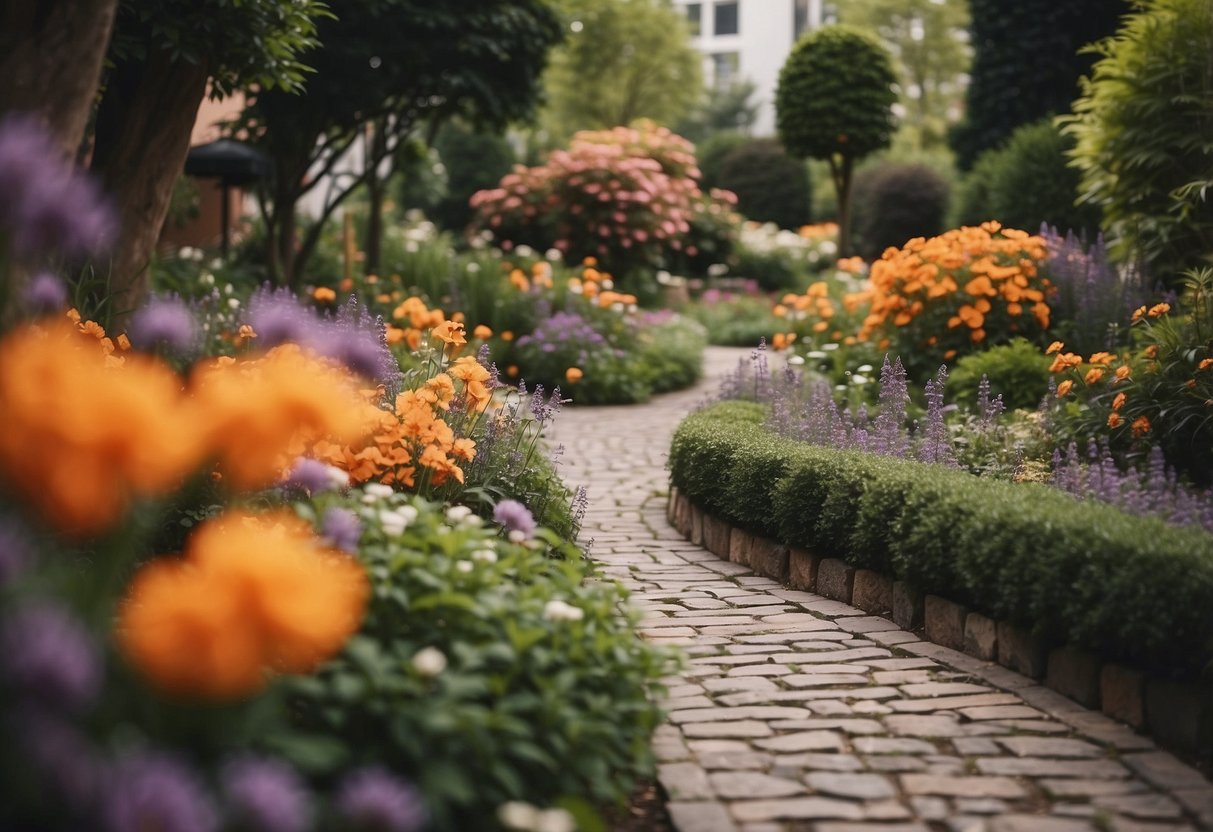
Why settle for ordinary colors when you can make your garden truly exceptional? With the right plants and design ideas, an orange and purple garden can become a visual delight, inviting you and your guests to spend more time enjoying the outdoors.
1) Vibrant Orange Daylilies

Orange Daylilies are a stunning addition to any garden. Their bold, fiery hues bring a burst of color that stands out beautifully in green spaces.
These flowers do best with at least six hours of direct sunlight each day. They are eye-catching and can brighten up any garden layout, creating a lively and inviting atmosphere.
Planting Orange Daylilies along edges or in a zigzag pattern can add visual interest. Their vibrant colors can evoke feelings of happiness and warmth, making your garden a welcoming space. Learn more about Orange Daylily benefits.
2) Purple Coneflowers

Purple coneflowers are a must-have for your garden. They bring a bright and cheerful touch with their pinkish-purple petals.
These flowers can grow up to 3 feet tall, making them a standout in any garden. They also attract pollinators like bees and butterflies.
They pair well with other plants that need similar care, such as phlox and butterfly weed. Their low maintenance needs make them perfect for gardeners of all skill levels.
3) Orange Marigolds
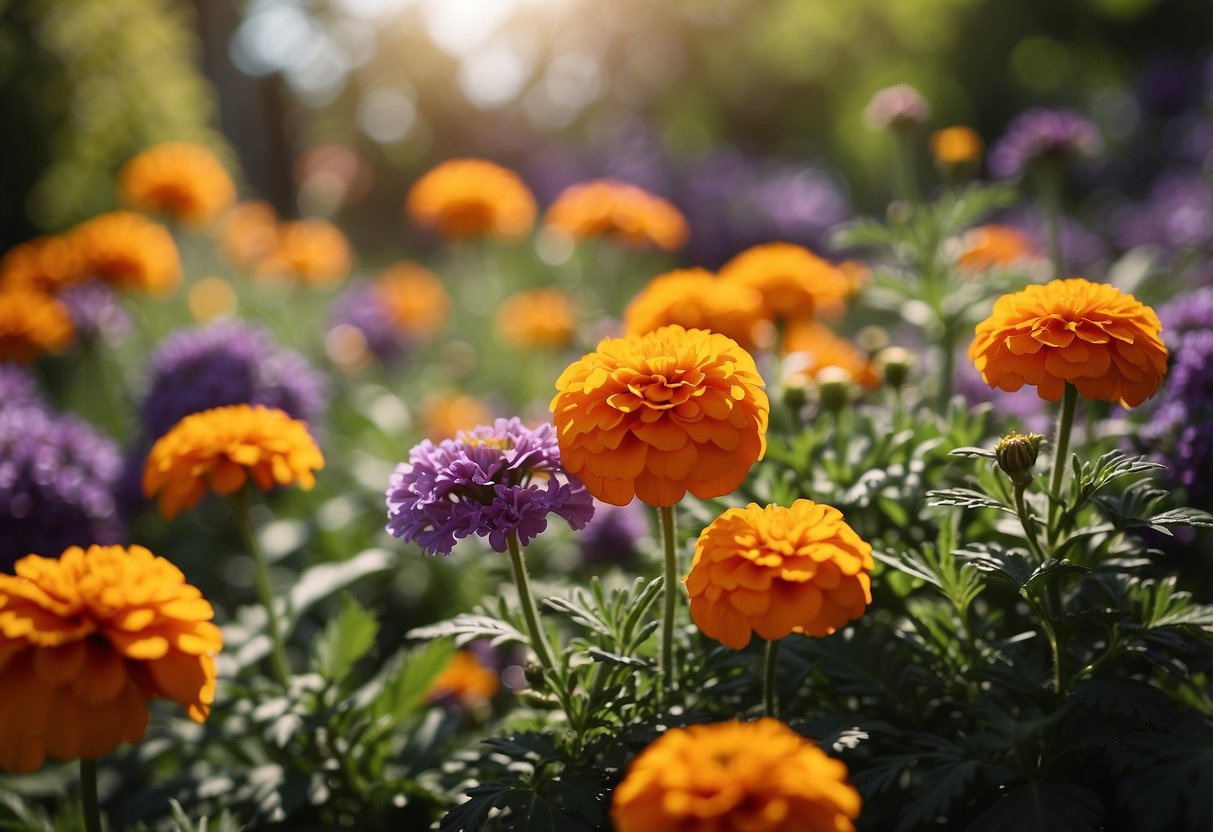
Orange marigolds are a fantastic choice for adding bright and cheerful colors to your garden. They stand out with their vibrant hues and can make any garden look lively.
You can plant them in rows to create a striking border or mix them with other flowers for a colorful display. Their strong, heat-resistant nature makes them perfect for sunny spots.
Planting marigolds around vegetables like broccoli can also help repel pests, benefiting your entire garden.
4) Lavender Shrubs
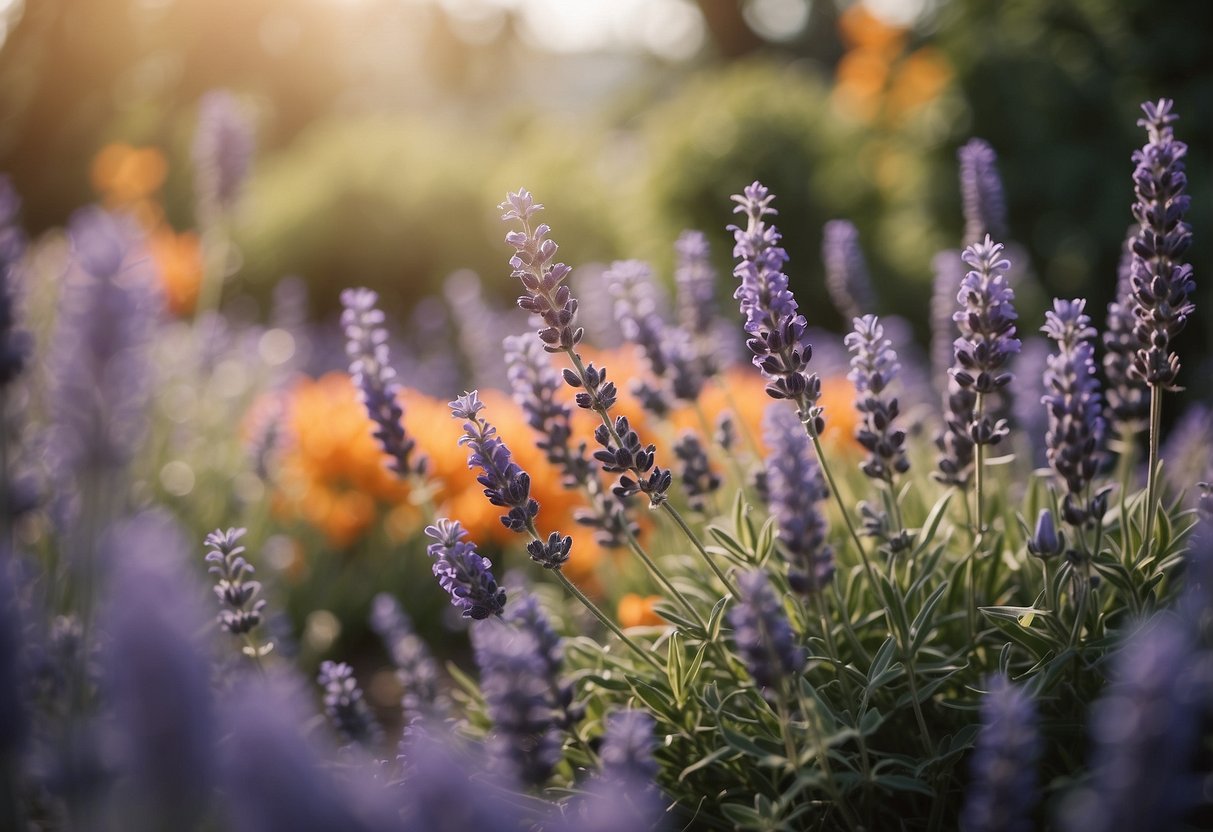
Lavender shrubs bring a burst of purple to your garden. Their vibrant flowers and soothing scent are a real treat. You can plant lavender next to stone walls to create a lovely contrast with orange flowers.
For the best impact, plant lavender in groupings. Try arranging them in bands or blocks to show off their color. This makes your garden look fuller and more vibrant. Adding lavender near pathways can also create a pleasant aroma as you walk by. Consider using these ideas to enhance your garden’s beauty.
5) Orange Tulips
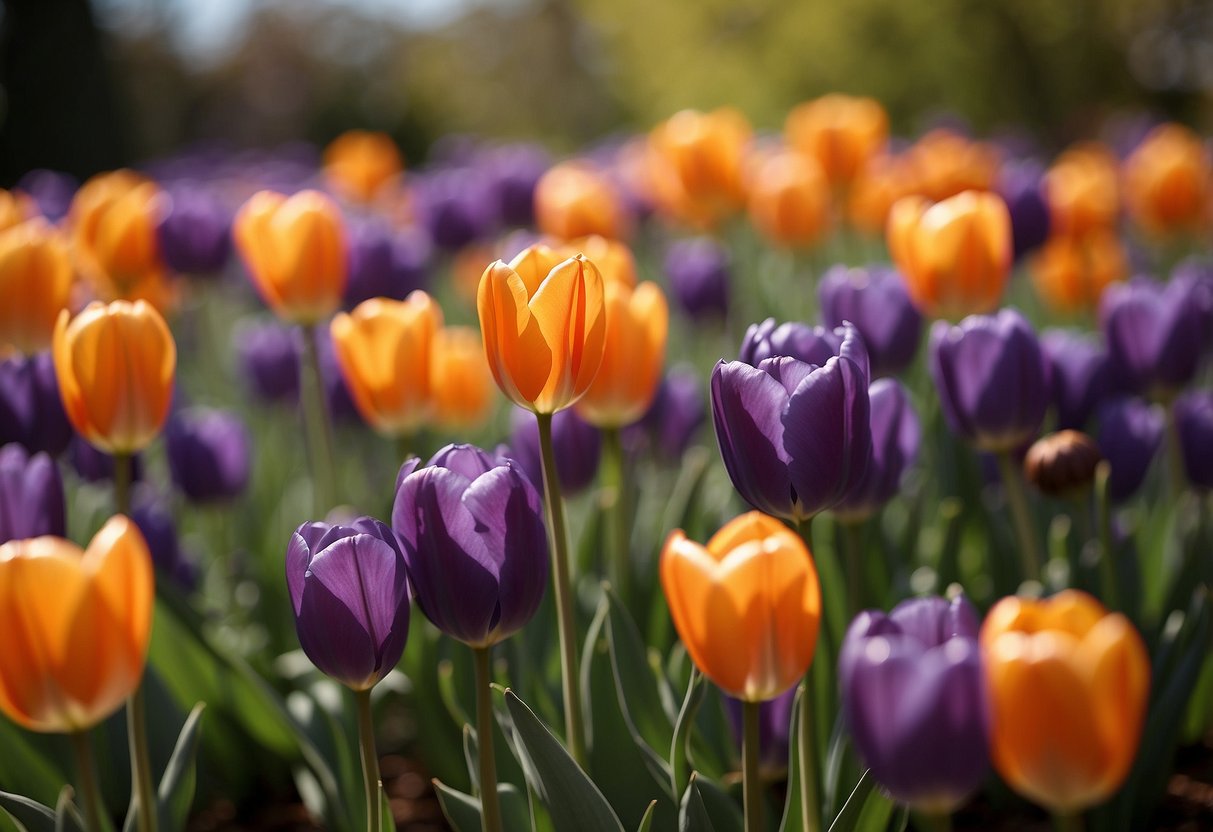
Orange tulips add a burst of color to your garden. They are perfect for adding warmth and vibrancy.
For a vivid display, you can plant varieties like the Orange Emperor tulip. This type grows up to 16 inches tall and can thrive in full sun and well-drained soil.
Consider combining orange tulips with purple flowers. The contrast is stunning and can make your garden stand out. Check out some great tips on combining them here.
6) Purple Salvias

Purple salvias are a great choice for adding vibrant color to your garden. They are versatile and easy to grow. Some popular varieties include Salvia verticillata ‘Purple Rain’ and ‘Amethyst Lips’.
These plants bloom from late spring to early fall, creating a long season of interest. They thrive in sunny spots and well-drained soil. Pair them with orange flowers for a striking contrast.
You can enjoy their beautiful blooms while also attracting pollinators like butterflies and bees to your garden.
7) Orange Zinnias
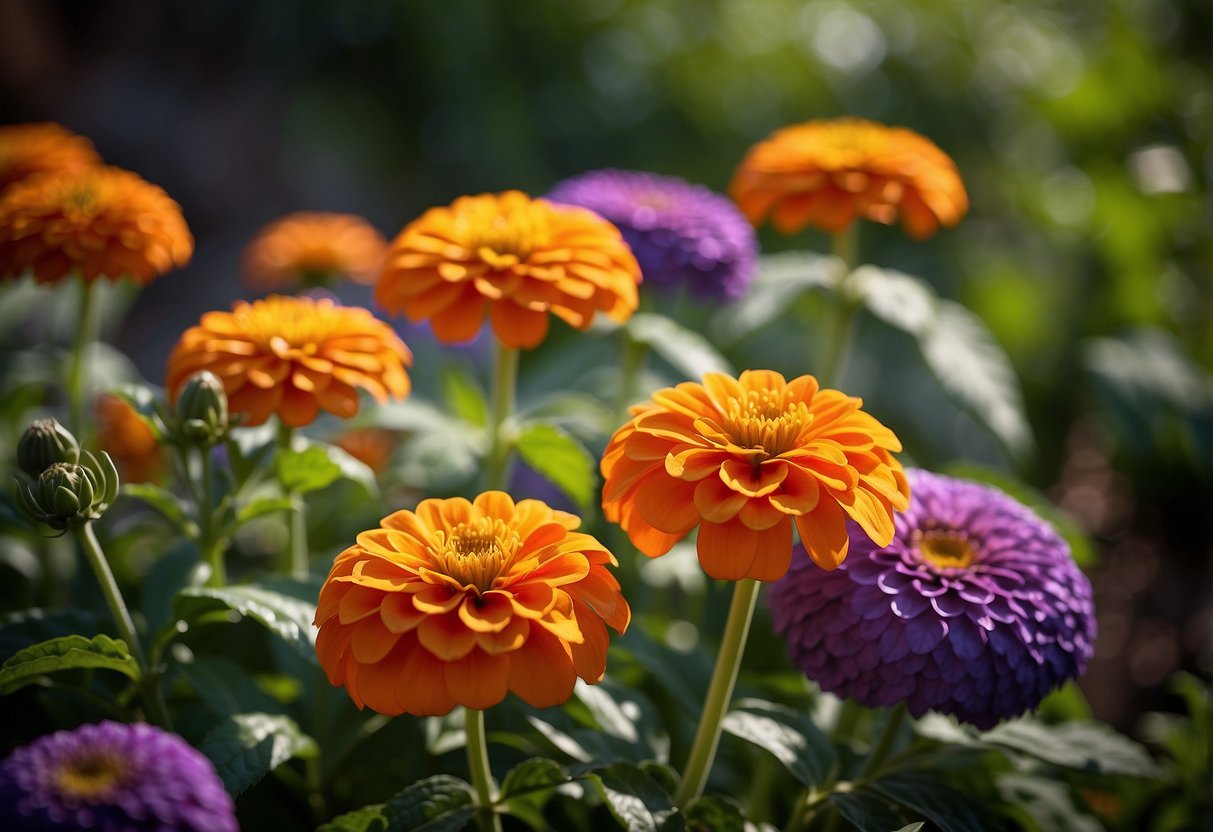
Orange zinnias are a vibrant addition to any garden. They bring a pop of color and can make your garden stand out. Plus, they attract butterflies and hummingbirds, adding more life to your space.
You can plant them in beds, borders, or large containers. They thrive in full sun and well-draining soil. Zinnia ‘Profusion Orange’ forms a dense, compact mound, perfect for a neat look.
Try pairing them with purple flowers for a striking contrast. This mix creates an eye-catching display that will impress everyone who visits your garden.
8) Purple Alliums
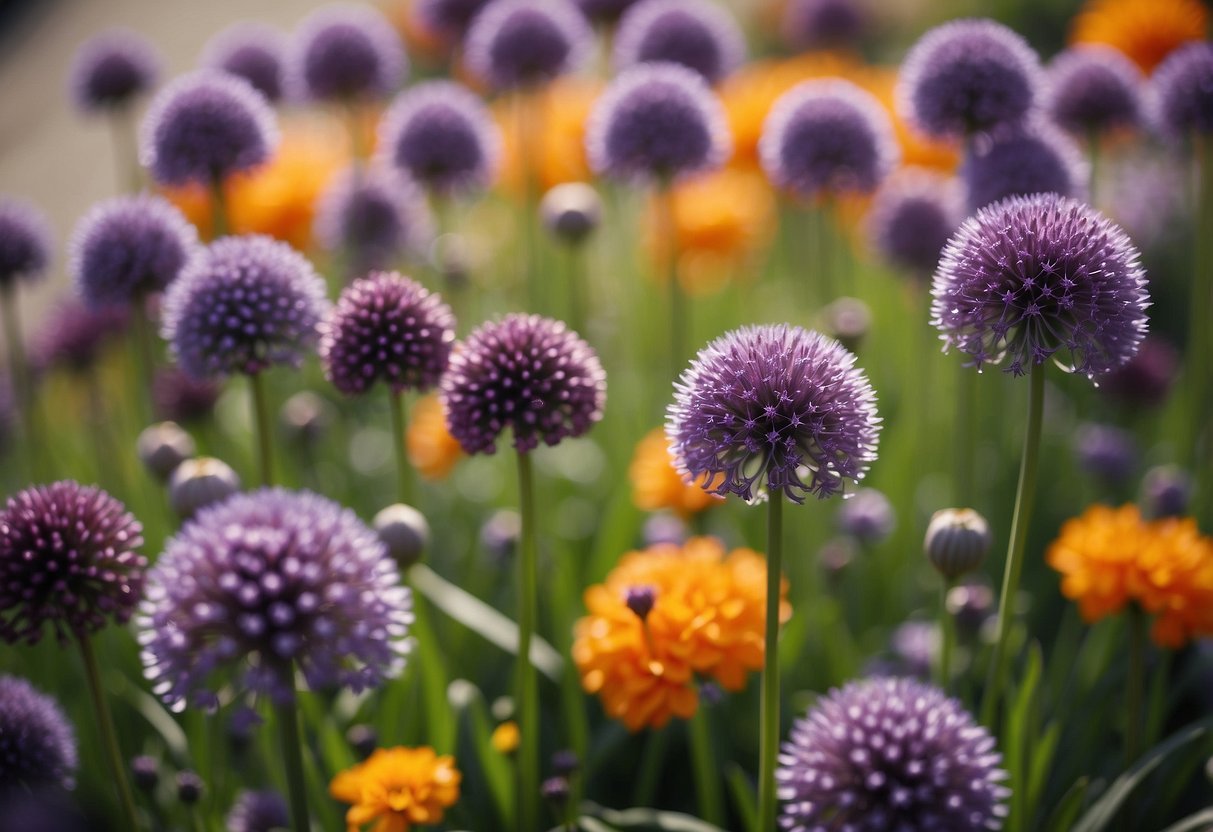
Purple alliums are a stunning addition to any garden. Their large, round blooms can reach up to 10 inches in diameter, making them a real standout. They thrive in both full and partial sun and can handle sandy or rocky soil.
These flowers aren’t just beautiful; they also attract pollinators like bees and butterflies. Planting them in groups of five or more will create a dramatic effect, adding a whimsical touch to your garden.
9) Orange Nasturtiums

Orange nasturtiums bring a burst of color to your garden. They have vibrant, funnel-shaped blooms that stand out against their round, variegated leaves. These flowers are great for both garden beds and containers.
You can enjoy varieties like “Orange Troika,” which offers a rich, orange-red hue. The blossoms also attract pollinators, making your garden lively. Plus, they are easy to grow, even for beginners.
Try planting them around trellises or letting them spill over pots for a stunning display. Check out more about Orange Troika nasturtiums.
10) Purple Irises

Purple irises bring vibrant color to your garden. These flowers range from deep violet to light lavender.
They bloom in late spring and thrive in full sun to part shade. Plant the rhizomes in well-drained soil, spacing them about 10-12 inches apart.
For more details on specific types, visit Purple Iris Cultivars.
Selecting the Right Orange and Purple Plants
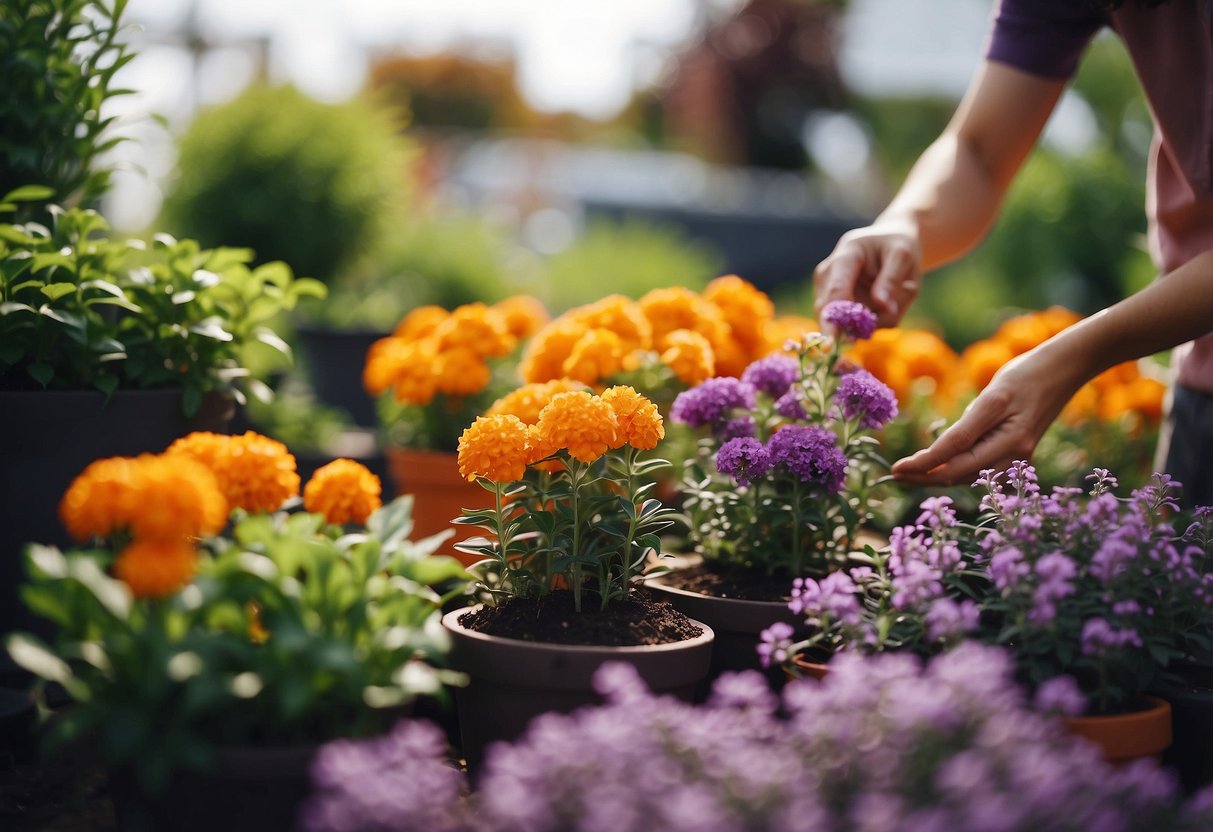
When creating a garden that features orange and purple plants, it’s important to consider the harmony and balance of colors and plant sizes. Choosing the right varieties and arranging them thoughtfully can create a stunning and cohesive display that highlights both hues.
Choosing Varieties for Color Harmony
For a vibrant combination, select plants that offer rich shades of orange and purple. Fiery orange lilies and vibrant zinnias are great choices that stand out. Mix these with purple lavender or deep violet irises to create a striking contrast.
Marigolds and coneflowers provide bright orange tones, while heliotropes and petunias deliver deep purples. Make sure the colors complement each other rather than clash. This will help create a visually appealing garden.
Consider bloom times too. Choose plants that bloom simultaneously or in succession to ensure that your garden is always in color. This way, your garden remains lively throughout the growing season.
Balancing Plant Heights and Sizes
Balance is key to a well-designed garden. Arrange taller plants like sunflowers and foxgloves at the back or center if your garden is circular. Place medium-height plants like dahlias and rudbeckias in the middle. Low-growing flowers like pansies and alyssum work well at the front or edges.
Group plants of similar heights to maintain a tidy look. Avoid overcrowding by spacing your plants correctly. This helps each plant get enough sunlight and air. Check the plant labels for recommended spacing.
Incorporating a variety of plant sizes also adds depth to your garden. Use plant groupings to create layers that make your garden look fuller and more dynamic. This thoughtful arrangement enhances both the visual appeal and health of your garden.
Creating a colorful and balanced garden with orange and purple plants can be a joyous and rewarding experience. By carefully selecting plant varieties and arranging them based on height and size, you can enjoy a beautiful and harmonious garden space.
Design Principles for an Orange and Purple Garden

To create a visually stunning garden with orange and purple, focus on contrasting and complementary color schemes. These principles will help you make your garden stand out while maintaining visual harmony.
Creating Focal Points with Contrasting Colors
Using bold color contrasts, like orange and purple, makes certain areas of your garden pop. You can achieve this by planting bright orange flowers, such as marigolds or zinnias, next to deep purple blooms like irises or lavenders. This contrast attracts the eye and creates a dynamic visual effect.
Mixing these colors in flower beds or planters can draw attention to specific garden features. For example, placing orange flowers around a central fountain or statue makes these elements stand out. Similarly, a border of purple flowers along a pathway guides visitors through your garden, leading them from one focal point to another.
Using Complementary Colors for Visual Appeal
Orange and purple are complementary colors that, when used together, enhance each other’s vibrancy. To create visual appeal, consider pairing them with different shades and tints. Lighter purples mixed with deeper oranges can create a gradient effect, making the garden look more cohesive and balanced.
Planting these colors in large groups can create a striking visual mass. For instance, a bed of orange daylilies next to a swath of purple petunias creates a beautiful contrast while maintaining balance. Using similar principles, you can design garden sections that stand out without overwhelming the senses.
Incorporating these colors thoughtfully in your garden design can result in a vibrant and inviting outdoor space that everyone can enjoy.
Caring for Orange and Purple Gardens
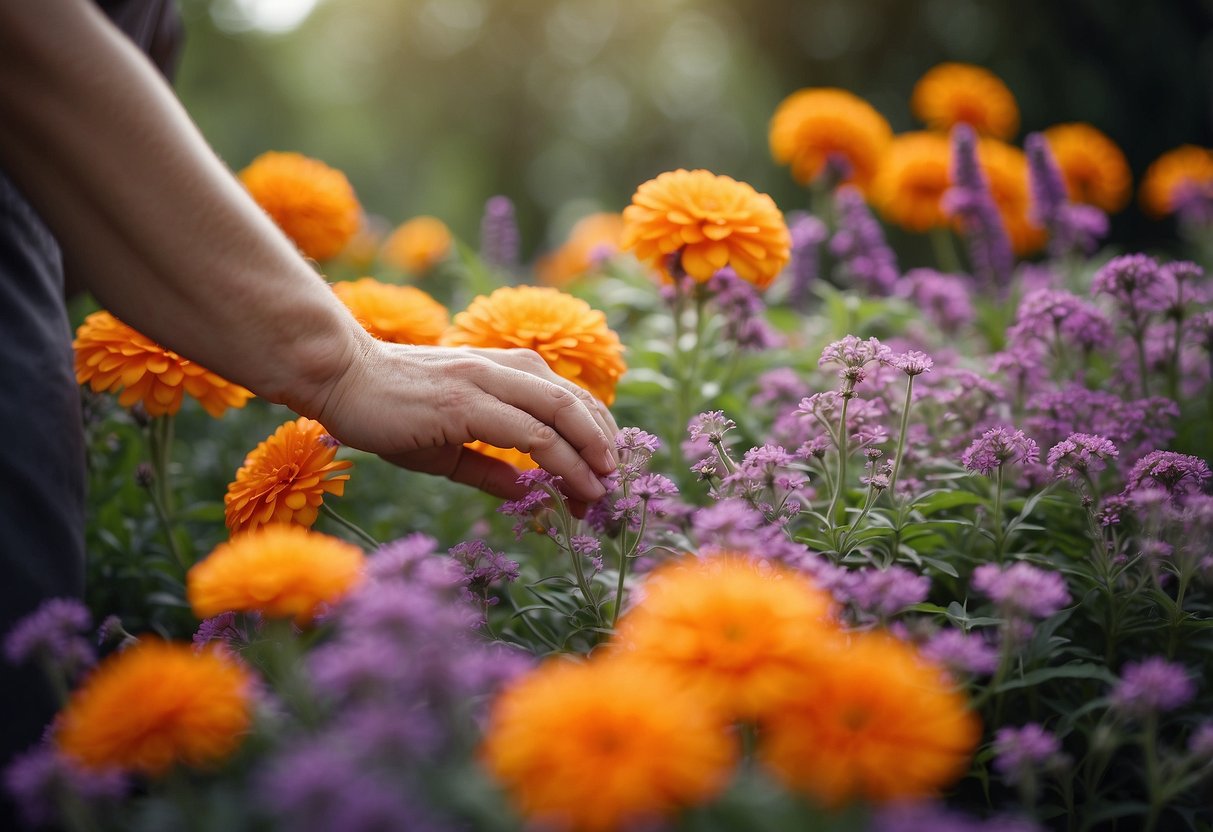
Proper care for orange and purple gardens includes attention to watering practices and soil quality, along with effective pest control and disease management.
Watering and Soil Tips
To keep your orange and purple garden vibrant, begin with well-draining soil. Good soil prevents water from pooling around plant roots, which can cause rot. Adding organic matter like compost improves soil structure and nutrient content.
Water your garden early in the morning. This practice reduces the risk of fungal infections that thrive in moisture. Newly planted flowers need frequent watering until they’re established. Once established, deep watering a few times a week encourages root growth and makes plants more drought-resistant.
Mulch is another beneficial addition to your garden. It helps retain soil moisture, suppresses weeds, and regulates soil temperature. Ensure a layer of 2-3 inches around the base of plants but keep it away from stems to prevent rot.
Pest Control and Disease Management
In your orange and purple garden, pests and diseases can be a challenge. Begin by choosing disease-resistant plant varieties. Healthy plants are less susceptible to pests and diseases. Regularly inspect your plants for signs of trouble like holes in leaves, discolored spots, or wilting.
For pest control, use natural solutions such as neem oil or insecticidal soap. These are effective and environmentally friendly. Introducing beneficial insects like ladybugs can also help keep harmful pests in check.
Fungicides may be necessary for disease management, but use them sparingly. Rotate plants each year to avoid soil-borne diseases building up. Proper spacing between plants improves air circulation, reducing the risk of fungal issues.
Remember, a healthy garden is your best defense against pests and diseases. Regular maintenance, including pruning dead or diseased parts, keeps your garden looking its best.







